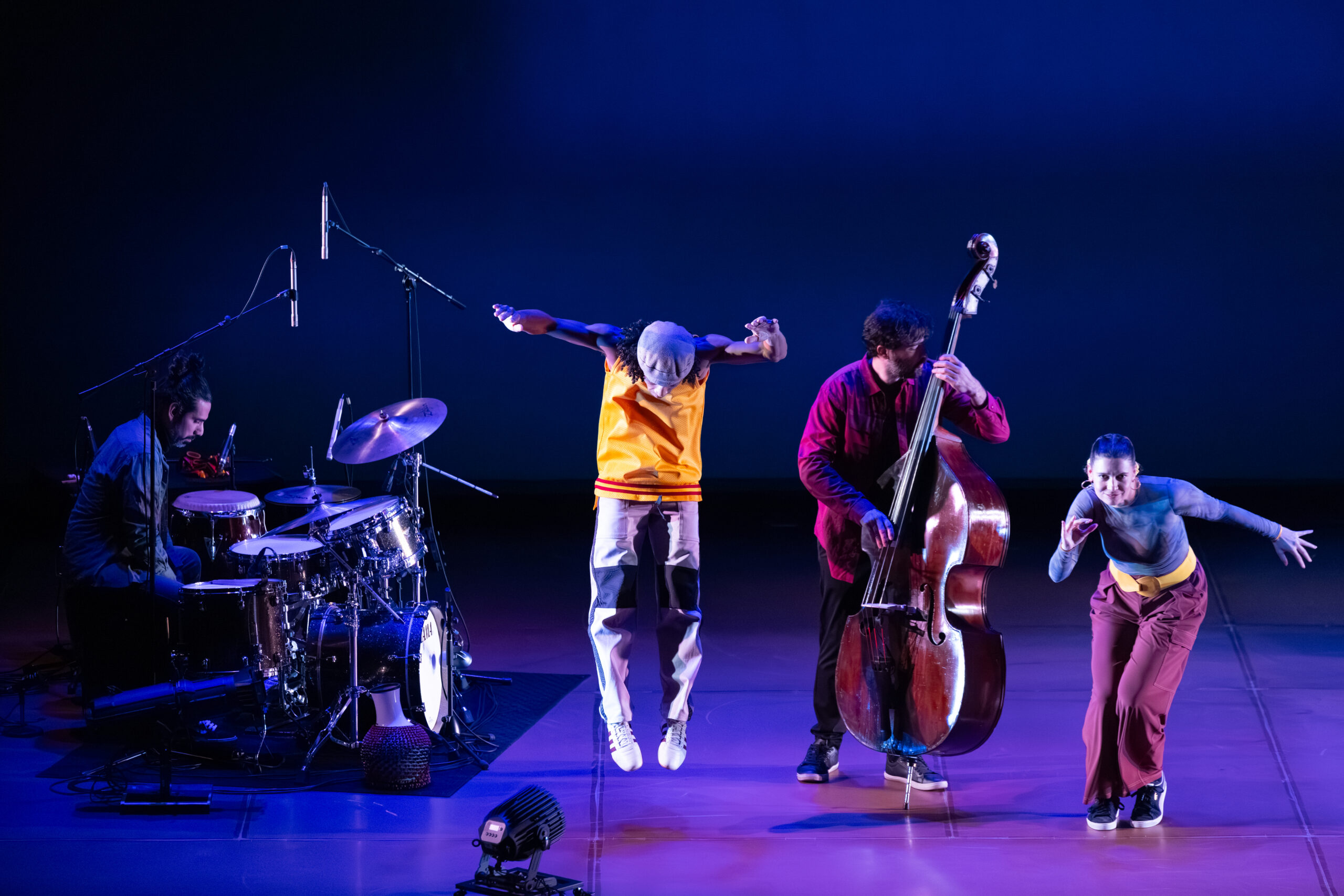2nd floor parochial schoolroom, Southeast Philly.
Three large cabinets.
On their shelves: folded clothes, books, a large white stone, a seedpod.
25-member audience, on folding chairs.
Tile floor.
A galvanized bucket.
Four corner windows facing the Northwest, skyscrapers distant.
87-degree early evening in late September.
A blue end-of-day sky.
Dusty chalkboards (another kind of window).
*
Violin-sound, outside the room.
*
The audience hush one another. A woman fans herself, producing a rhythmic, static sound. A moaning and a keening joins the violin in the hall before fingers appear in the doorway, making their way down the frame.
*
Violinist Diane Monroe enters in black socks, playing to cabinets and walls and window before turning around. We are not an acknowledged part of her interior, though we witness it in this small, familiar space. We are interlopers. But that is not true: this is a performance. I wonder how much of our interior lives is just that—a subtle and complex composition we enact for our own inscrutable reasons.
*
Dancer Leah Stein is suddenly in the room, water falling through her cupped hands like time or grief. This is the last gasp of Indian summer, the day is falling away, the two performers are beyond youth, the world is not new. When Stein turns to drag her wet hands down the blackboard, leaving a trace that evaporates even as she makes it, Monroe echoes her motion with sound. Stein retrieves a cloth from the chalk tray to clean a mess that will disappear with or without her efforts, then follows Monroe’s steps across the floor—clearing away the husks of notes that fall from her bow.
*
The two women wear much the same outfit: black pants, magenta shirts. They work sensitively off one another in a back-and-forth weaving that has no clear lead-or-follow. The violinist moves around the room, the dancer makes music. For nearly an hour, both wear the patient expressions of teachers, of women attending to minutiae, doers of daily, unremarked-upon work involving close listening and perseverance and sometimes Sisyphean futility (the rock stares insistently from the cabinet). Diane Monroe is black and Leah Stein is white and though the work does not overtly remark upon this difference, in this second-tier domestic space, I notice it. And I notice myself noticing it. This intimate collaboration of two artists is not free from all that lies beyond the classroom windows. How I read this poem is partly determined by the world outside this book.
*
The sun continues to go down. Its reflected light climbs the far wall. We learn in school that we are the ones actually moving, around and around for as long as our bodies last on this earth. Right now, watching these women negotiate the repurposed space and the fading light and each other, this feels true.
*
When Stein takes clothes from the cabinets and lines them in a trail to the bucket; when she crouches along beside them, piling them heavily into the creases of her hip, her upper back, under her armpit; when she collects what will only spill (like marbles from the bucket she turns over minutes later), what will need to be gathered up and washed and folded again—I read the piece as an elegy to lives lived beyond this space, lives without celebration or witness. And when Stein and Monroe leave the room, and the audience is asked to rearrange their seats in preparation for the women’s lively and playful return—an after-school-hours coda from a different perspective—I read my reading (any reading) of a glimpse into someone else’s interior world(s) as incomplete. We cannot know all. Our efforts to be with, to know, one another will always be imperfect, and yet… this does not make them any less necessary.
Interior, Leah Stein Dance Company, Art Room, September 13, 14, 19, 20, 21, 23 at 6:00 pm, http://www.leahsteindanceco.org/interior






